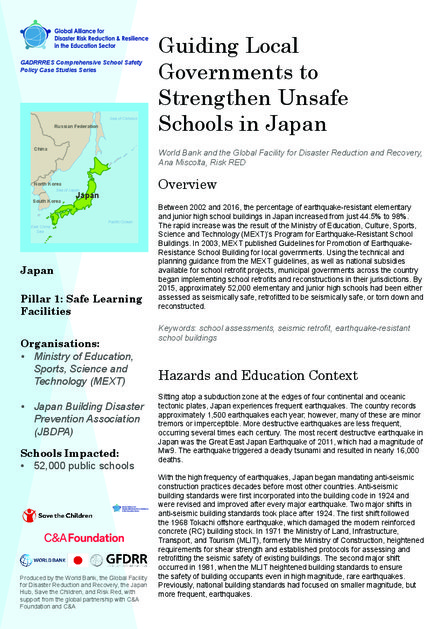
This case study explores how Japan developed guidelines for local governments to plan and implement assessment and retrofitting projects, and established a national subsidy programme for school assessments and retrofits, in order to strengthen all high school buildings in the country to resist earthquakes.
This case study is part of a series of case studies documenting how countries have been developing and implementing Comprehensive School Safety (CSS) policies that address the three CSS pillars: safer learning facilities (pillar 1), school disaster management (pillar 2), and risk reduction and resilience education (pillar 3).